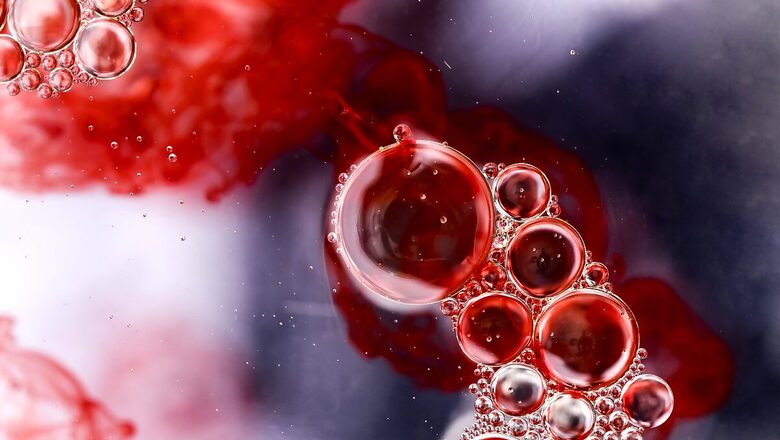
views
Hemophilia is a rare genetic disorder that affects the blood’s ability to clot properly. Although, both males and females can inherit hemophilia, it is much more common in males. This is because the genes that cause hemophilia are located on the X chromosome, which is one of the two sex chromosomes. Females have two X chromosomes, while males have one X chromosome and one Y chromosome. Since hemophilia is a recessive trait, males who inherit the hemophilia gene on their X chromosome are more likely to develop the disorder since they do not have a second X chromosome to compensate for the defective gene.
Dr Tanmay Deshpande, Consultant General Paediatrics and Paedaitric Genetics and Metabolic Diseases, Sir HN Reliance Foundation Hospital, says, “Heme means blood and Philia means Love. Whenever we get a wound or a cut or have a fall, we may bleed. In a non-affected individual, this bleeding, if mild or moderate, stops on its own. This happens due to our body’s clotting mechanism, which forms a thick plug at the wound site and stops the bleeding. One very well-known component of this is platelets. Similarly, we have other clotting factors ranging from Factor I to Factor IX.”
Haemophilia is mainly of 2 types, Haemophilia A-factor Viii def and Hem B, Factor ix deficiency. This is due to genetic defect which prohibits the production of these factors.
“Hemophilia is a bleeding disorder due to lack of clotting factors, which has two types A (patients in India- 11587) and B (Patients in India-1687). Usually people have 50-150% of each of these factors. The lack of the factors predisposes the patient to have bleeding with superficial cuts or spontaneous bleeding in joints usually the weight bearing ones like knee,” says Dr Vijay Ramanan, Sr. Consultant Clinical Haematologist, Ruby Hall Clinic, Pune.
So, if someone has less than 50% factor the person is supposed to have Hemophilia. If the factor level is 5% – 50% it’s called mild Hemophilia (need to rule put Von Willebrand disease), if it’s 1% to 5% then it’s called moderate Hemophilia and if it’s less than 1% it’s called Severe Hemophilia.
“The gene coding for Factor VIII and IX comes on X chromosome of which men have only one. So, if they receive the defective chromosome from mother the disease manifests. Women usually two X Chromosomes so one compensates for other,” adds Dr Ramanan.
Here, the individuals who are affected, if they get a wound or a cut, the bleeding is profuse and does not stop.
This may lead to catastrophic events like death if the wound or fall results in an internal bleeding or in intracranial haemorrhage.
Haemophilia is a male Predominant disorder i.e. every individual, genetically, is distinguished in 2 sexs. Males possess XY sex chromosome and Females possess XX Chromosomes.
Haemophilia is a X-Linked disorder i.e. the genetic mutation which causes this disorder sits on the X chromosome.
Dr Deshpande asks us to consider the following scenario.
The male is affected: that means, he received the genetic mutation from his mother because his father contributed only the Y chromosome. When this male will procreate, he will pass on the Y chromosome to all his male babies and hence they will not be affected but, he will pass on the faulty X chromosome to all his girl babies making them possess on problematic X coming from father and one normal X coming from mother, making them carriers of this disorder and hence leading to continuing of the cycle.
The next question is how to identify these patients early. The first signs and symptoms are seen when the baby boy is taken for vaccination or immunisation, there is a high chance of a. Hepatoma or intramuscular bleed due to factor deficiency.
The next phase when this can be seen is when the baby starts crawling or has a fall in infancy, this results in Hemarthrosis i.e. bleeding internally in the joint space resulting in swelling, redness around the joint and irritability secondary to severe pain.
The next milestone when this is observed is when the parents start using a brush to clean the gums or teeth of the baby, resulting in gum bleeds which do not stop.
Anytime through life whenever there is a chance of a bleed, internal or external, these patients have a high probability to bleed to death if not treated on time.
Treatment
The usual treatment is supplementing deficient factor from outside to maintain factor level above 1%- which is good enough to prevent bleeding.
“In west it’s called prophylactic administration but in India majority of patient take it ON DEMAND after joint bleeding or any other episode due to prohibitive cost. The factors are either generated from plasma fractionation or from cell lines which is called recombinant factors. Newer molecules like polyethylene glycol increases the half-life of the factor from few hours to few days to weeks.
The only cure is by gene therapy which is in its infancy and hopefully will become widespread in next decade,” adds Dr Ramanan.
Prevention is by antenatal diagnosis and termination of pregnancy in families with known Haemophilia.
Read all the Latest Lifestyle News here


















Comments
0 comment